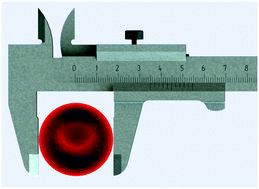Technologies for measuring red blood cell deformability
Abstract
Human red blood cells (RBCs) are approximately 8 μm in diameter, but must repeatedly deform through capillaries as small as 2 μm in order to deliver oxygen to all parts of the body. The loss of this capability is associated with the pathology of many diseases, and is therefore a potential biomarker for disease status and treatment efficacy. Measuring RBC deformability is a difficult problem because of the minute forces (∼pN) that must be exerted on these cells, as well as the requirements for throughput and multiplexing. The development of technologies for measuring RBC deformability date back to the 1960s with the development of micropipette aspiration, ektacytometry, and the cell transit analyzer. In the past 10 years, significant progress has been made using microfluidics by leveraging the ability to precisely control fluid flow through microstructures at the size scale of individual RBCs. These technologies have now surpassed traditional methods in terms of sensitivity, throughput, consistency, and ease of use. As a result, these efforts are beginning to move beyond feasibility studies and into applications to enable biomedical discoveries. In this review, we provide an overview of both traditional and microfluidic techniques for measuring RBC deformability. We discuss the capabilities of each technique and compare their sensitivity, throughput, and robustness in measuring bulk and single-cell RBC deformability. Finally, we discuss how these tools could be used to measure changes in RBC deformability in the context of various applications including pathologies caused by malaria and hemoglobinopathies, as well as degradation during storage in blood bags prior to blood transfusions.

- This article is part of the themed collection: Microfluidics for hematology


 Please wait while we load your content...
Please wait while we load your content...